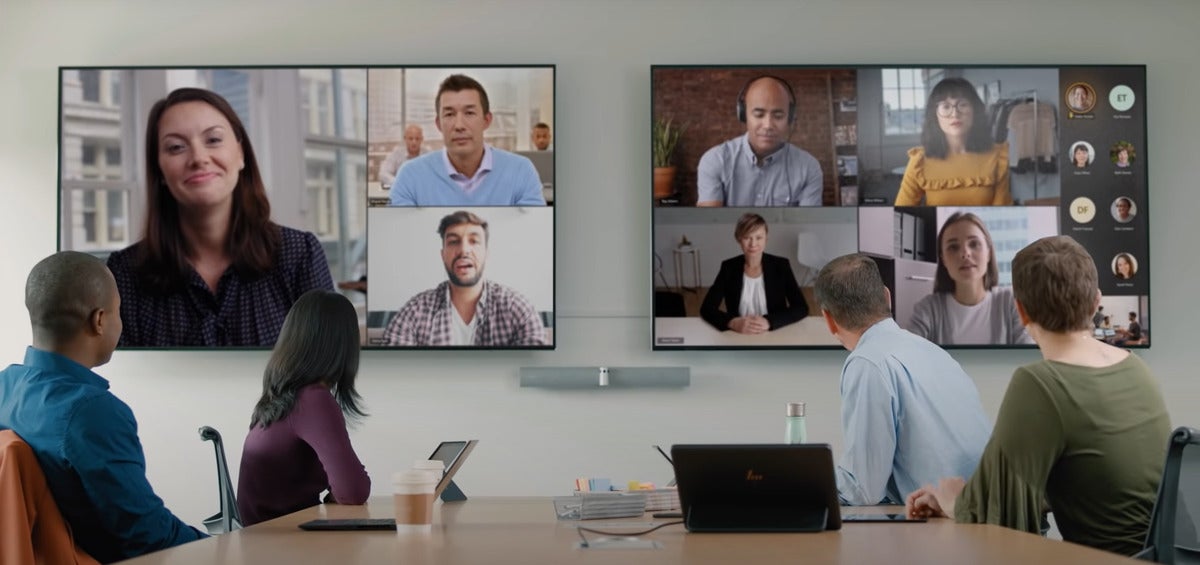The COVID-19 pandemic was, no doubt, an unusual event. But we're likely to see more such crises in the future. How successfully we handle them will depend on what happens and how politicians and corporate executives respond. One thing that's clear is that flexibility and foresight will be needed as companies sort out what comes next.
For example, it seemed clear a year ago that practically everyone in office jobs would remain largely remote, so companies realized they needed occasional on-premises collaboration spaces that were small and intimate. (These were often called huddle rooms.)
Now, companies are talking about large conference rooms again as they envision people coming back to the office en masse — largely because they never addressed the issues that cropped up with the shift to remote work. Those problems include workers who felt like they didn't have the same opportunities as on-site employees and managers who either don’t know how to manage remote employees or simply don't trust them to do their jobs.
While part of the problem may well be poor management training, we’ll leave that for another day. But when it comes to setting up collaboration spaces for in-office and hybrid worker use, there are some things IT decision makers and business execs need to keep in mind.
Flexibility is key
I’ve been covering videoconferencing and collaboration since the late 1980s. There's been a recurring cycle: companies get excited about a technology, invest in it, then lose interest to a degree that vendors exit the market, leaving customers exposed.
There are ways to avoid that — if you plan smartly.
First, when choosing a videoconferencing vendor, pick one that likely to survive market downturns so they'll be around when you need them. Then, as you consider their platforms and software, you'll want to look beyond price, ease of use, and ease of installation to determine how broad and flexible everything is. (By broad I mean how many of the videoconferencing back-end offerings it will work with). Not everyone will stay in this market and having expensive hardware that only supports a platform that no longer exists is ... less than desirable.
Interoperability is important, too. A rich peripheral ecosystem offers options should any one provider leave the market, making it more likely the system will continue to work — and you’ll have more choices if you decide to replace it.
And you should go small. Rather than getting huge conferencing monitors built for large spaces, consider smaller, multiple-monitor configurations. This kind of setup can be, if necessary, broken up and moved to smaller rooms should that make more sense than one large setting. It's important, too, to keep complexity low, as that keep support costs down and (hopefully) mean fewer problems for users.
Finally, and this goes beyond just the selection of technology, look at how these rooms are used and what savings you expect (in terms of travel costs and productivity costs). That way, you can craft long-term policies that continue to ensure the investment will be protected.
Back to the future?
Videoconferencing has been a critical way for companies to carry on since the pandemic arrived in 2020. Now that the pandemic focus has waned, we seem to be slowly going back to the way things were (with some companies moving faster than others). This changes not only how videoconferencing spaces should be set up, but whether they might be used at all.
As companies (and workers)have learned, the cost benefit of these rooms in terms of reducing travel and commuting costs is significant. That alone should justify their continued use — but only if those savings are captured and incorporated in decisions about whether people should be forced back to the office.
Bottom line: We are not only not done with this pandemic, but it's likely we’ll have others going forward. So it’s critical to develop a long-term remote strategy now that includes well-planned videoconferencing and collaboration spaces, management training, and remote management tools.
The goal is to make sure remote employees get the face time and relationship-building they need and companies get to a sustainable, steady state where everyone can work together, regardless of what's happening in the world.






